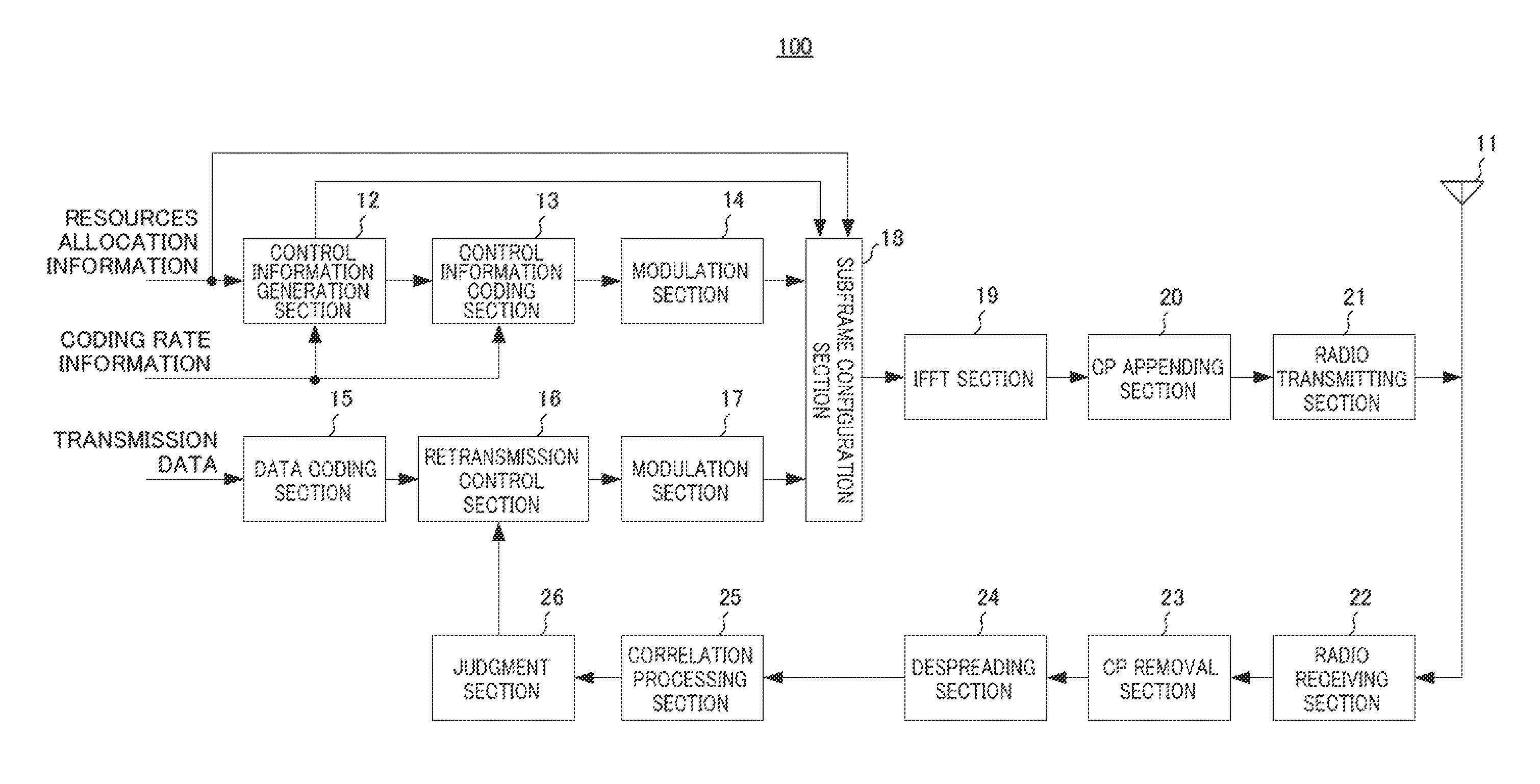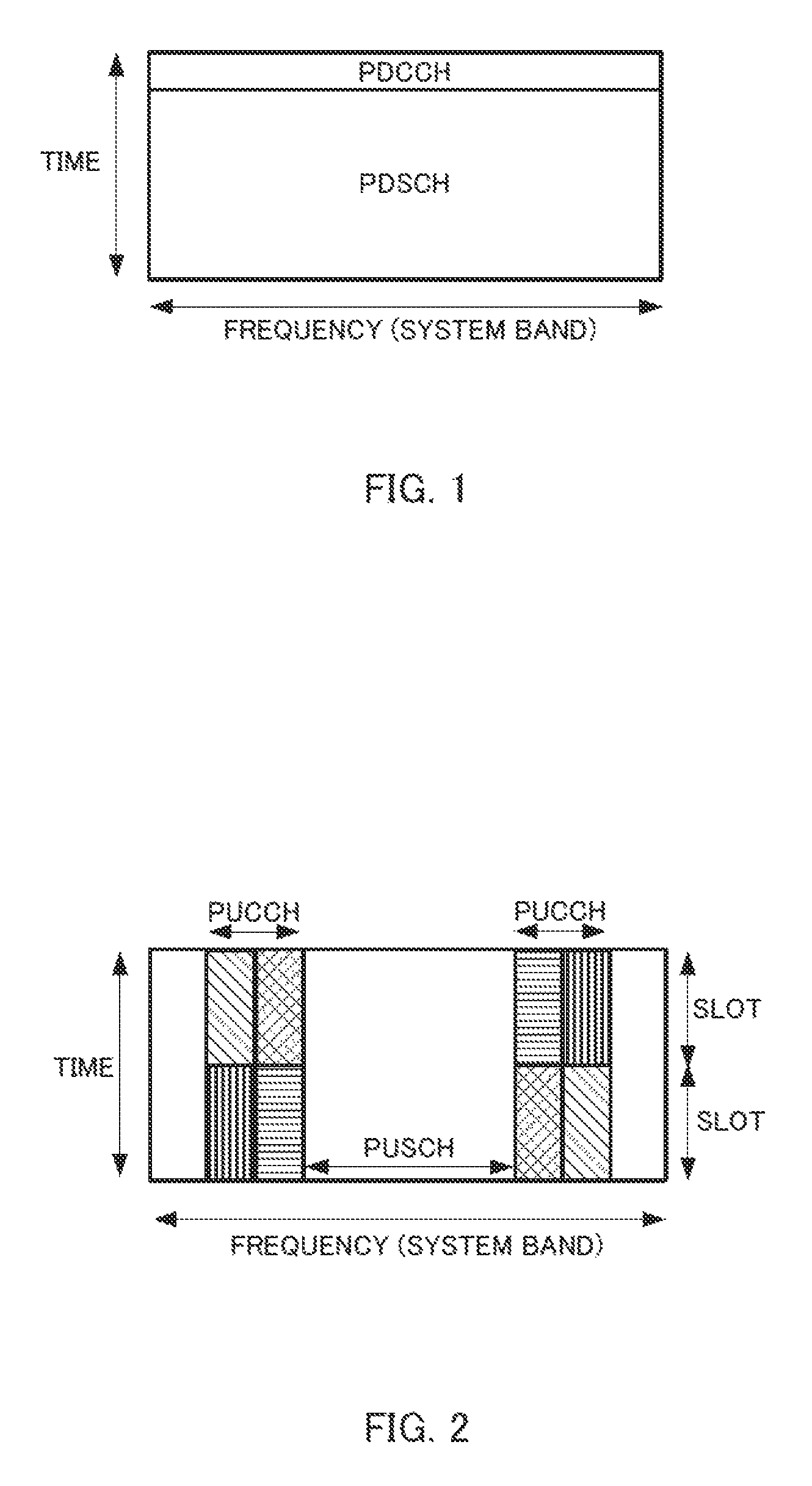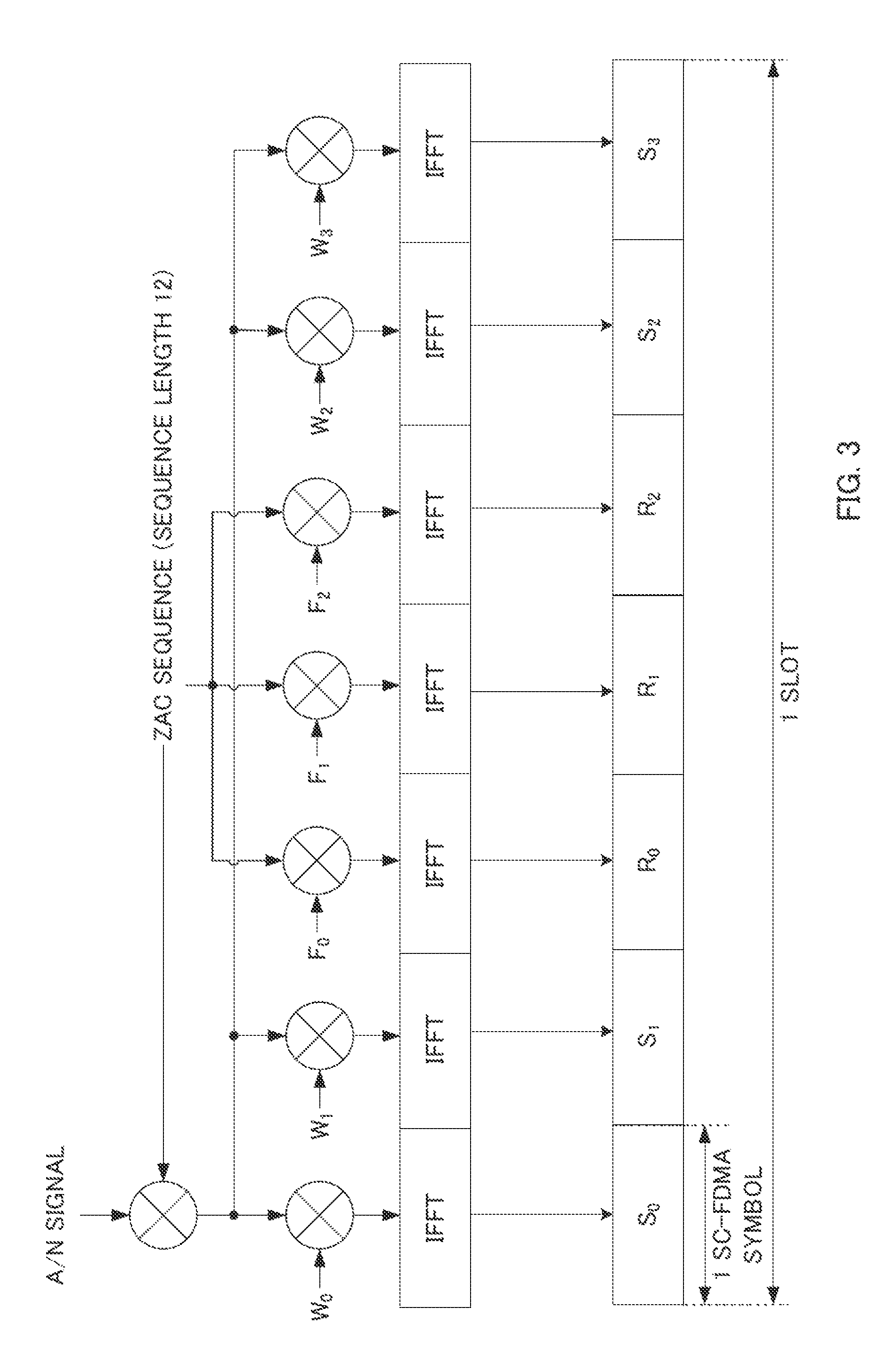Wireless communication terminal, base station device, resource allocation method
a technology of wireless communication and base station devices, applied in the direction of wireless communication, transmission path sub-channel allocation, wireless communication, etc., can solve problems such as retransmission of data, achieve the effect of avoiding collision between a/n signals, avoiding unnecessary reduction of pusch bands, and increasing a/n resource utilization efficiency
- Summary
- Abstract
- Description
- Claims
- Application Information
AI Technical Summary
Benefits of technology
Problems solved by technology
Method used
Image
Examples
embodiment 1
Background of Obtaining an Embodiment of the Present Invention
[0058]First, before describing the specific configuration and operation of Embodiment 1, one method that the inventors of the present invention have noticed as a method for allocating A / N resources in the case of adopting the E-PDCCH will be described.
[0059]FIGS. 4A to 4C show an example of the downlink subframe at the time of E-PDCCH transmission. FIG. 5 shows the system configuration when E-PDCCH is adopted.
[0060]An E-PDCCH has some or all of the following features.
(1) Unlike a PDCCH transmitted using resources common to all terminals, the E-PDCCH is transmitted using a frequency resource block allocated to each terminal.
(2) Unlike the PDCCH demodulated using a reference signal common to all terminals in a cell, the E-PDCCH is demodulated using a terminal-specific reference signal given to each terminal
(3) Unlike the PDCCH scrambled using a scramble code common to all terminals in the cell, the E-PDCCH is scrambled usin...
embodiment 2
Overview of Communication System
[0161]In Embodiment 2, E-PDCCHs are set as a PRB set composed of one or a plurality of PRBs for a terminal. In the terminal, E-PDCCHs are transmitted or received in the set PRB set.
[0162]Furthermore, one or a plurality of PRB sets of E-PDCCHs is / are set for each E-PDCCH terminal. Information on the set PRB set is notified from a base station to a terminal using RRC control information or the like. The number of the set PRB sets can be changed for each terminal
[0163]FIGS. 15A and 15B illustrate examples where two PRB sets are set within a subframe. FIG. 15A illustrates an example where the two PRB sets have the same PRB frequency interval and FIG. 15B illustrate an example where the two PRB sets have different PRB frequency intervals. It is assumed in Embodiment 2 that such a PRB frequency interval is settable for each PRB set or every plurality of PRB sets. Note that a plurality of predetermined PRB sets may be defined and PRB sets to be used may be s...
embodiment 3
Overview of Communication System
[0195]In Embodiment 3, E-PDCCH is transmitted or received to / from a terminal by a search space (SS) composed of one or a plurality of PRBs. The terminal receives the E-PDCCH in a set search space.
[0196]One or a plurality of search spaces is / are set for each E-PDCCH terminal A search space common to many terminals 200 is called “common search space (CSS)” and a search space common to only one or fewer terminals 200 is called “UE-specific search space (USS).” Information on the set search space is notified from base station 100 to terminal 200 through RRC control information or the like. The number of search spaces to be set can be changed from one terminal to another.
[0197]FIG. 19 shows an example where two search spaces: CSS and USS, are set within a subframe. Since a CSS accommodates even terminal 200 having a low average received signal to interference noise power ratio (SINR) of E-PDCCH or terminal 200 unable to perform E-PDCCH frequency scheduling...
PUM
 Login to View More
Login to View More Abstract
Description
Claims
Application Information
 Login to View More
Login to View More - R&D
- Intellectual Property
- Life Sciences
- Materials
- Tech Scout
- Unparalleled Data Quality
- Higher Quality Content
- 60% Fewer Hallucinations
Browse by: Latest US Patents, China's latest patents, Technical Efficacy Thesaurus, Application Domain, Technology Topic, Popular Technical Reports.
© 2025 PatSnap. All rights reserved.Legal|Privacy policy|Modern Slavery Act Transparency Statement|Sitemap|About US| Contact US: help@patsnap.com



